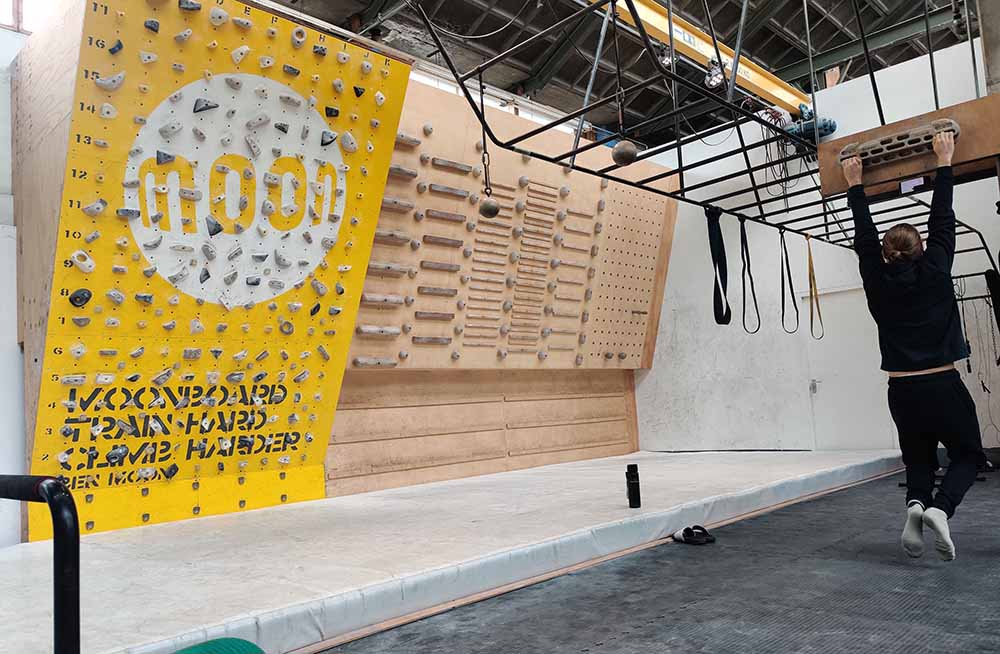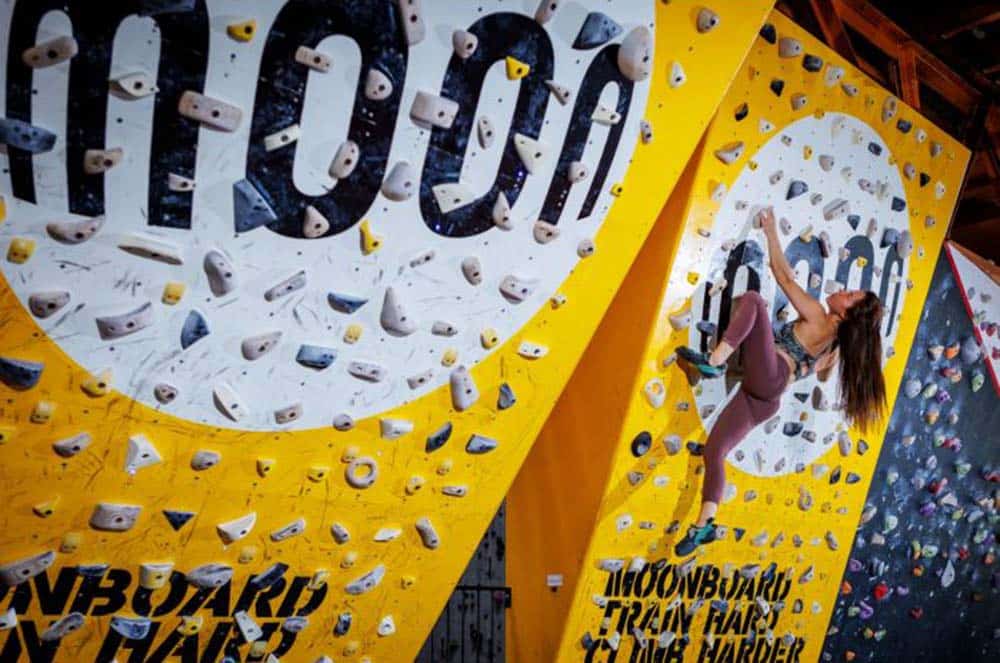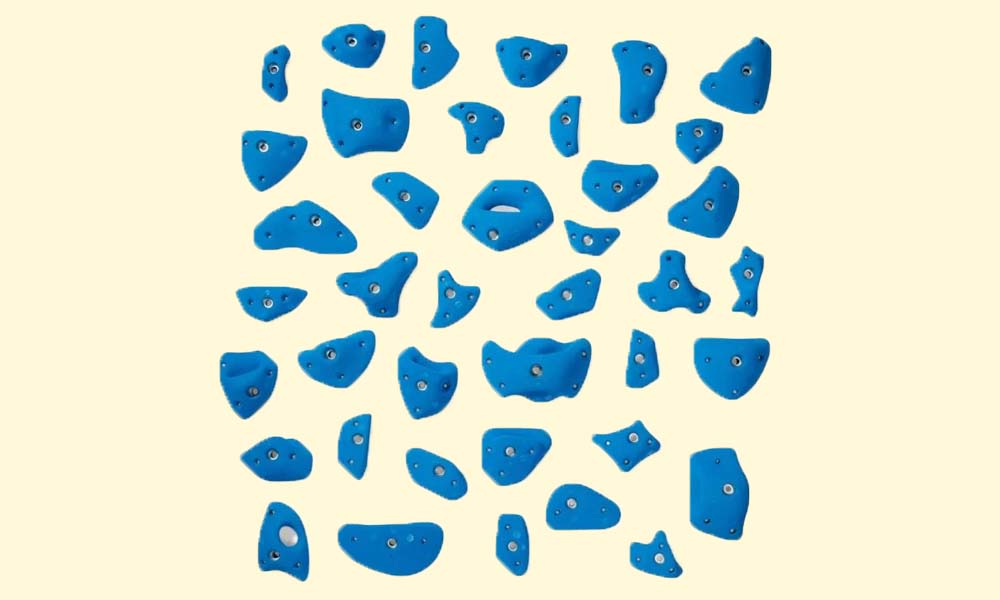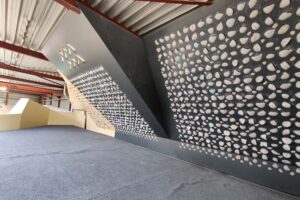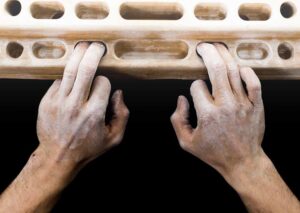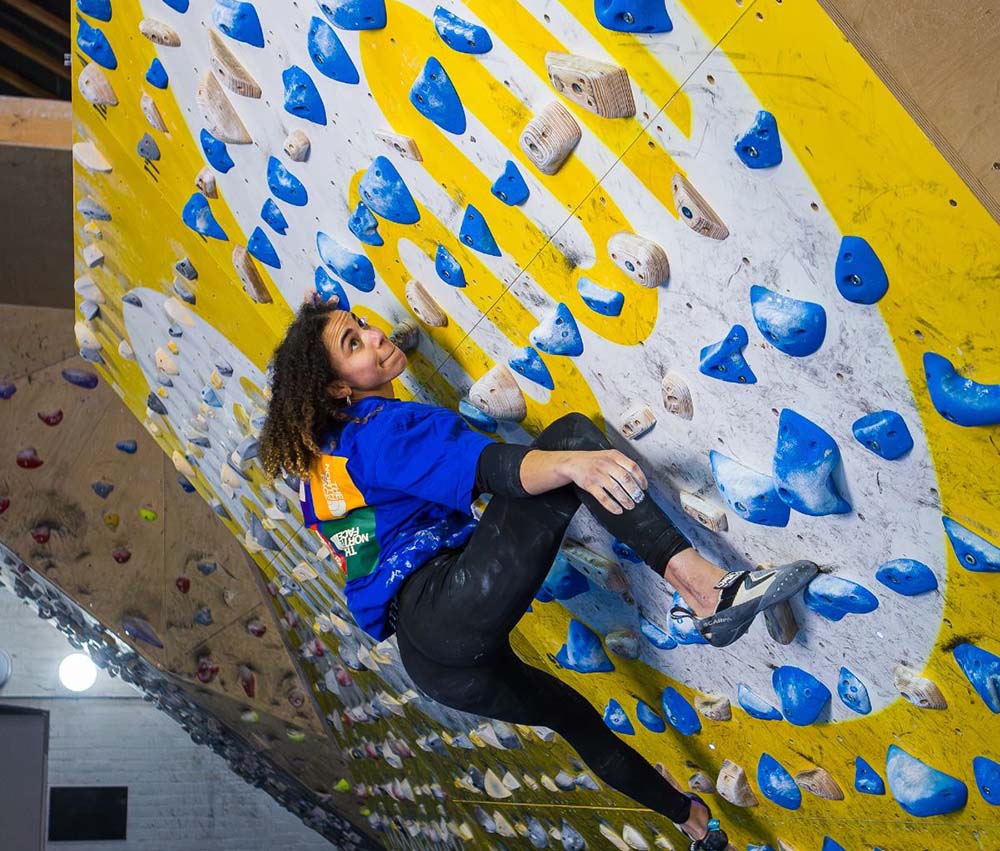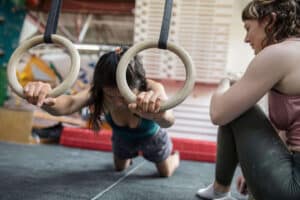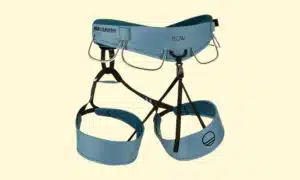When it comes to training tools you find in a climbing gym, only one other thing is as commonplace as the campus board, and that’s a climbing board. Climbing boards are small, overhung sections of climbing wall that are designed to train finger strength, power, and contact strength via short, explosive, and powerful boulder problems.
Of all the training boards in climbing gyms today, perhaps one of the most recognizable is the MoonBoard. Despite being one of the older indoor training boards for climbers, the MoonBoard continues to be one of the most effective and reliable options.
In this article, I want to talk about the MoonBoard, and how it compares to other climbing boards out there.
The Origin of the MoonBoard
Before discussing the modern MooonBoard, I want to briefly share how the MoonBoard got its start because, as climbers, we instinctually appreciate climbing history.
The 1980s and 90s were a passionate, determined, envelope-pushing decade for rock climbing. In the United States, the jock-like Stone Masters from Yosemite Valley were smashing and grabbing mindbending first free ascents of old aid lines. Across the pond, you had mental British climbers climbing techy and runout gritstone. One of those legendary British climbers was Ben Moon.
Like all highly talented climbers, Ben Moon and his buddies trained incessantly indoors. For them, the homemade, often wooden, climbing walls of the “School Room” in Sheffield, England, served as their training ground.
Meanwhile, over in Germany, Wolfgang Güllich was training on his homemade campus board to prepare for Action Directe.
In 2005, inspired by his humble beginnings, Moon eventually took the walls from inside the School Room one step further by developing a completely standardized training board. The board was set at 40° and included specifically designed resin climbing holds. What Moon created was the ideal indoor miniature climbing gym for training explosive strength and sheer power.
From then on, the MoonBoard quickly became the epitome of compact board climbing and has since inspired various iterations of modern training boards.
The Modern MoonBoard
Since its origin in the School Room of Sheffield, England, the MoonBoard has evolved. In some ways, it’s exactly the same. The overhang is still heinous, the problems are hard, and it is highly efficient at getting you stronger. And in others, it’s been modernized for today’s contemporary climbers. For examp,e, now their is a MoonBaord smartphone app. But more on that later.
A quote I pulled from the MoonBoard website sums up this sentiment nicely. “The MoonBoard is a standardised interactive training wall that connects a global community of climbers through shared problems and competitive performance rankings.”
What Do You Mean by “Standardized?”
What makes the Moonboard unique is that it’s standardized, meaning th hold setup on the wall is installed to match exact specifications. Therefore, the holds on a MoonBoard in England are the same as a board in Japan.
Since it’s creation, there’s been fair amount of development regarding hand and foot holds. Nowadays, there are multiple MoonBoard hold sets. For example, MoonBaord 2016, MoonBoard Masters 2017, and 2019. However, each set is still standardized.
MoonBoard Handholds and Footholds
Every single handhold on a MoonBoard is designated to precise coordinate and angle rotation according to each hold setup. Each MoonBoard hold set offers a different variety of holds shapes to create various climbing difficulties. Some handholds are on all MoonBoards while others are only featured on new setups.
There are two sets of footholds for MoonBoards. Every MoonBoard has the required yellow bolt-on footholds on the board’s kickboard. There is also an optional set upon translucent footholds you can install on the main panel.
Regarding footholds, there are four different foothold rules. The rules mared with a “*” are not available on the 2016 setup.
- Feet follow hands
- Feet follow hands + Screw-Ons*
- Footless (Kickboard footholds are allowed to start)*
- Screw-Ons only*
The MoonBoard App
Since the beginning, MoonBoard’s simple, standardized hold layout and fixed angle design have made the board a standout training tool for outdoor climbing. However, what eventually made the MoonBoard stand out even more was the development of the MoonBoard application.
The MoonBoard app allows you to connect directly to the board and climb. Meaning, on modern MoonBoards, you can use your phone to illuminate LED lights that correspond to different boulder problems on the wall.
The app has also become a global network of user-generated boulder problems. Because of the board’s standardized design, you can climb the exact same boulders as your favorite pro climbers, regardless of your location. Similarly, you can use the app to design your own boulders for the climbing community to enjoy.
My favorite of the MoonBoard’s unique features is the logbook. You can log every ascent into the app’s logbook. This allows you to track your progress over time. This is a super valuable assessment tool to keep track of your progress.
How To Use the MoonBoard
In reality, you can climb on the MoonBoard however you like. But if you want to get the most out of it as a training tool, it’s best to follow the MoonBoard rules.
- Every problem starts two-handedly. If there is only one start hold, you must match hands.
- All problems start with both hands on the designated hold or holds and end with two hands on the designated hold or holds.
- Feet follow hands unless other footholds are designated.
- All kickboard footholds are allowed.
- All kickboard footholds must be placed with the sloping side facing up.
- All start holds must be designated to row 6 or lower.
- Every problem has to finish on the top row with two hands either matched on a single hold or two hands on individual holds; when finishing, you must display control for at least two seconds.
- You can use any portion of the designated hold.
- Heel and toe hooking and matching are allowed.
- The default grading system is either Font or V-Scale grades; this can be adjusted in the MoonBoard app settings.
A Word of Caution About Using the MoonBoard
The MoonBoard is notorious for being very challenging. The easiest grade on the MoonBoard is V4 (6B+). It’s not uncommon for novice climbers to find the MoonBoard too difficult. That’s because there are no jugs, the wall angle is steep, and the style movement patterns are “bouldery” and powerful.
Lastly, the grades tend to feel sandbagged.
All that is not to say that the MoonBoard is only for advanced climbers. It’s not, anyone can climb on it. It’s just that it a decent base level of finger strength, climbing technique, and intrigue in bouldery climbing movement is recommended.
Also, warm up. Don’t ever skip warm-ups before MoonBoarding. Your forearms will become instantaneously blasted to kingdom come if you skip warming up.
Helpful Tips For MoonBoarding
Want to try out the challenge of MoonBaording? Here are some tips I wish someone told me when I got into training board climbing.
- Warm Up. I know I just mentioned this, but warming up is critical for all forms of climbing, not just MoonBoarding. If you loosen up and recruit muscle before your session, your session will be way more productive.
- Check Your Ego at the Door. If you are new to board climbing, you will find it challenging. The holds are small, the body tension you need is unique, and the movement is powerful.
- Identify a Training Goal. Mindlessly flipping through boulder problems on the MoonBoard is not effective. Instead, set a goal and stay focused.
- When Fatigued– Be Done. Resting in between efforts on the MoonBoard is critical. A good rest can help you deploy maximum strength. Even more critical is calling quits on your session when you are too tired so you can avoid injury.
- Wear the Right Climbing Shoes. The wall is steep. Therefore, aggressively downturned shoes are helpful. In addition, the hold selection trends toward the smaller size, so shoes you can be precise with are also helpful.
- Try Hard. MoonBoard climbing is designed to push your limits. Embrace the challenge and try hard. You might surprise yourself (and your friends) with what you can hang onto.
MoonBoard vs. Kilter Board vs. the Tension Boards
Although the MoonBoard may have been the original, it’s no longer the only one. Now, there are other popular training boards on the market, like the Kilter and Tension Board.
To me, there is no clear winner– each board possesses qualities that I like.
Final Thoughts About the Legendary MoonBoard
If you want to improve your explosive power, contact strength, and dynamic climbing style, the MoonBoard is an excellent tool. Of all the climbing boards, it’s by far the simplest, and it’s been around the longest.
Just be ready for tough routes! But if you can stick with it, learn the style and improve your strength, you’ll quickly see how fun the MoonBoard can be. For me, that mixture of fun and trying hard makes for the ideal climbing training experience.


